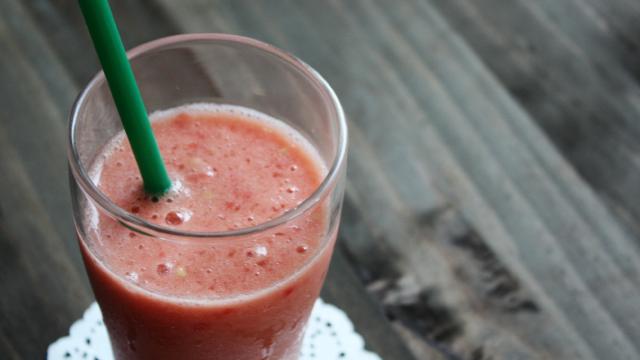I’m writing this seated on a plane heading to San Francisco. We’ve been in the air for under an hour, and the drink cart is just starting to make its way down the aisle. As the cart rolls nearer I’m forced to decide what drink I’ll be having. Since the cups are minuscule, and the liquid is largely displaced by ice cubes if one’s not quick enough to add “no ice, please” to the order, the decision is critical.
Despite the fact that I never drink tomato juice on the ground, I’m once again craving the drink in mid air. In fact, on the very first flight I took as a kid — from Athens, Greece to Toronto back in 1991 — I distinctly remember ordering tomato juice. Now, why would a 10-year old kid crave tomato juice? And why am I now having the same craving?
It has been known for some time that there exists overlap between our senses in how we perceive the world. For instance, it is well-established that the visual appearance of food influences the perception of flavour. Ever made the error of having three things on your plate of broadly the same colour? There’s just something very unappetising about it, and the flavour never seems as rich as expected. The role of our olfactory sense in the perception of flavour is well illustrated by the blandness of most food when we have a cold and are noses are congested. Differing textures are also helpful in making food more appetising.
So what about the flight experience might be playing havoc with our perception of taste and thus our craving for certain flavours. The answer, according to some recent research, appears to be cabin noise.
In the study, Yan and Dando assessed the effect of loud audio stimulation on the perception of the five basic tastes.
A total of 48 men and women evaluated multiple standardised solutions for perception of sweet, salty, sour, bitter, and umami flavours, on a validated scale while in silence (condition A) or an environment that replicated conditions found during aeroplane flight and landing (condition B). Specifically, cabin noise was recreated from actual aeroplane cabin noise recordings, delivered to participants at 80 to 85 dB through high-definition headphones.
And what did the research reveal?
First, noise that one might experience onboard an aeroplane seems not to affect our perception of salty, bitter, and sour flavours.
However, exposure to loud noise caused a pronounced suppression of sweetness intensity across all concentrations measured. Ever noticed how all pop drinks taste like their diet (low or no-sugar) equivalents while in the air?
Conversely, loud noise was found to increase the perceived intensity of umami flavour, found in foods and drinks containing monosodium glutamate (MSG).
Thus, the popularity of umami-rich drinks such as tomato juice onboard aeroplanes may be the combined result of enhanced umami taste and dulled sweet taste.
These findings may also explain the consistently poor ratings of aeroplane food. Then again, the cardboard that passes for chicken on planes is likely to taste just as awful on the ground as it does at 30,000 feet.
And finally, the level of noise at restaurants may also influence the flavours perceived in the foods served. Theoretically, a loud restaurant would do well to serve umami-rich foods, but focus less on desserts and sweets.
Or you could just bring industrial-strength ear plugs with you everywhere and avoid noise affecting your meal altogether. [Journal of Experimental Psychology]
This article first appeared on PLoS Blogs and is republished here under Creative Commons licence.
Picture: haley. s/Flickr
